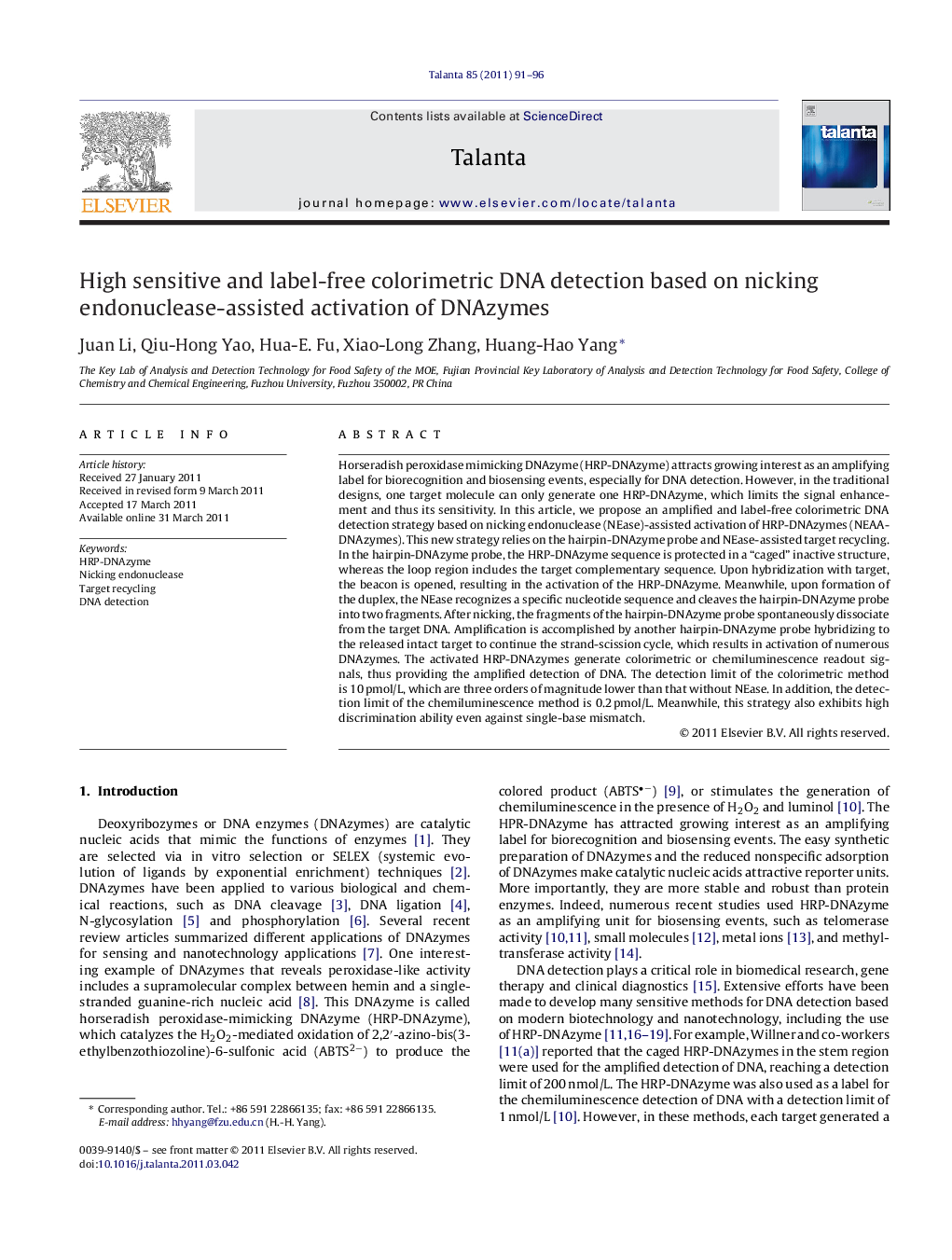| Article ID | Journal | Published Year | Pages | File Type |
|---|---|---|---|---|
| 10559749 | Talanta | 2011 | 6 Pages |
Abstract
Horseradish peroxidase mimicking DNAzyme (HRP-DNAzyme) attracts growing interest as an amplifying label for biorecognition and biosensing events, especially for DNA detection. However, in the traditional designs, one target molecule can only generate one HRP-DNAzyme, which limits the signal enhancement and thus its sensitivity. In this article, we propose an amplified and label-free colorimetric DNA detection strategy based on nicking endonuclease (NEase)-assisted activation of HRP-DNAzymes (NEAA-DNAzymes). This new strategy relies on the hairpin-DNAzyme probe and NEase-assisted target recycling. In the hairpin-DNAzyme probe, the HRP-DNAzyme sequence is protected in a “caged” inactive structure, whereas the loop region includes the target complementary sequence. Upon hybridization with target, the beacon is opened, resulting in the activation of the HRP-DNAzyme. Meanwhile, upon formation of the duplex, the NEase recognizes a specific nucleotide sequence and cleaves the hairpin-DNAzyme probe into two fragments. After nicking, the fragments of the hairpin-DNAzyme probe spontaneously dissociate from the target DNA. Amplification is accomplished by another hairpin-DNAzyme probe hybridizing to the released intact target to continue the strand-scission cycle, which results in activation of numerous DNAzymes. The activated HRP-DNAzymes generate colorimetric or chemiluminescence readout signals, thus providing the amplified detection of DNA. The detection limit of the colorimetric method is 10Â pmol/L, which are three orders of magnitude lower than that without NEase. In addition, the detection limit of the chemiluminescence method is 0.2Â pmol/L. Meanwhile, this strategy also exhibits high discrimination ability even against single-base mismatch.
Related Topics
Physical Sciences and Engineering
Chemistry
Analytical Chemistry
Authors
Juan Li, Qiu-Hong Yao, Hua-E. Fu, Xiao-Long Zhang, Huang-Hao Yang,
